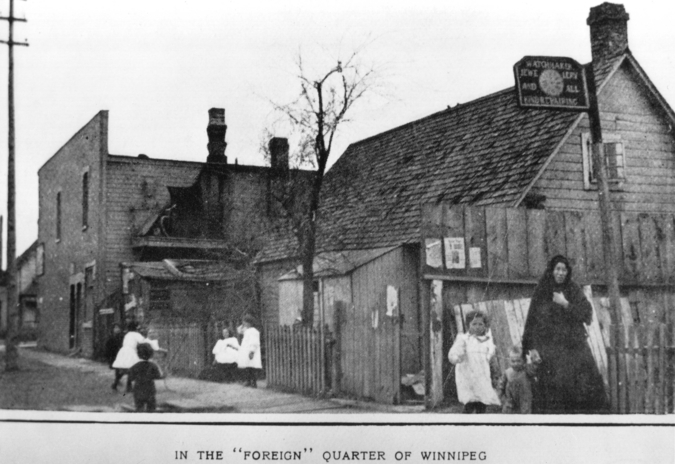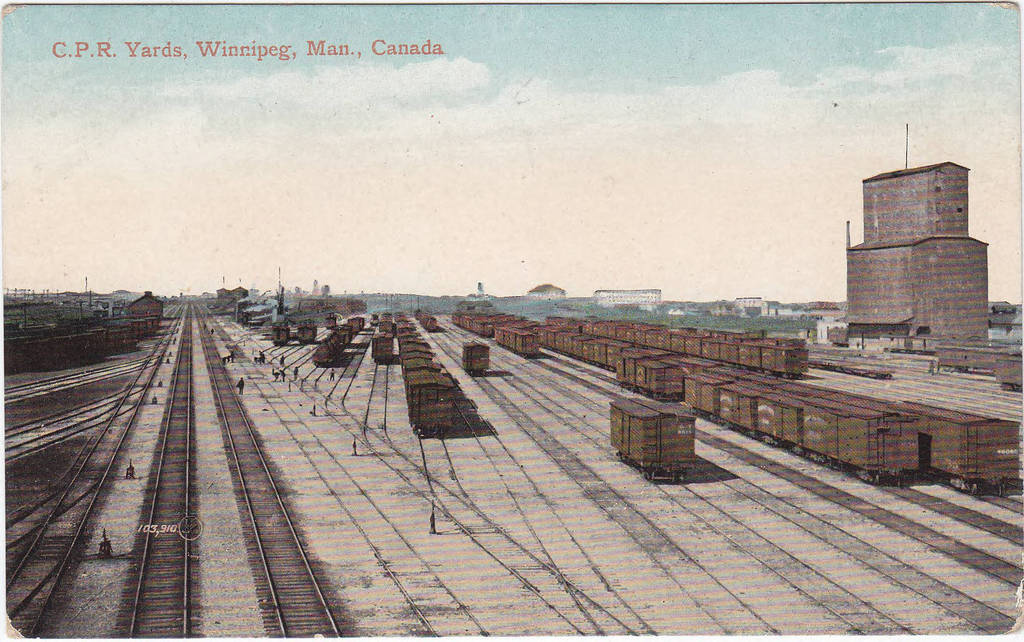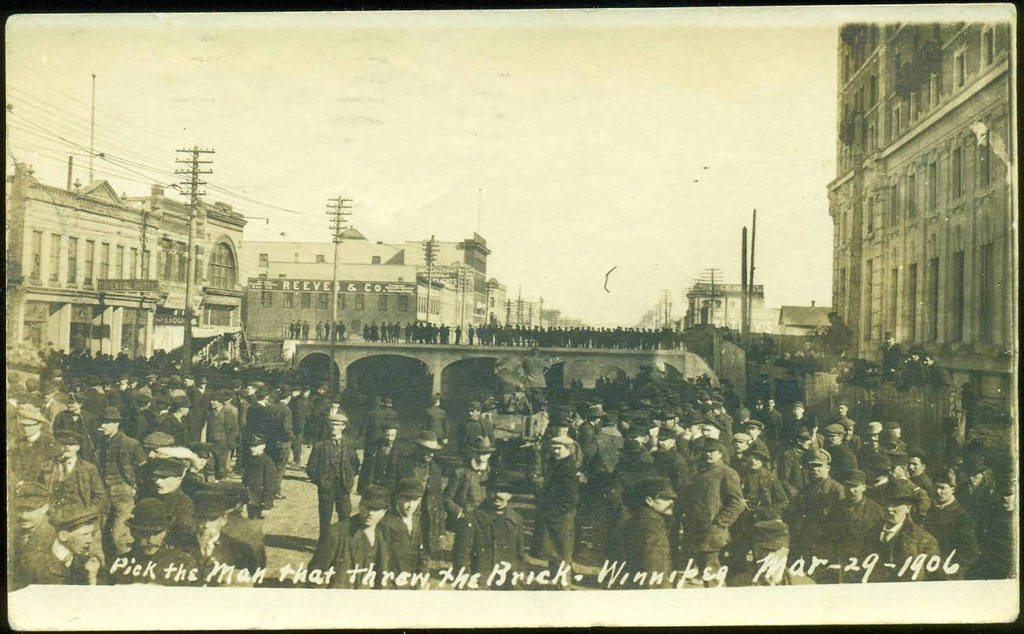The North/South Divide: Spatial, Cultural, and Economic
The South side, a generalization of the South, East, and Western wards of Winnipeg, provide a distinct and unique perspective on the development of roads in the city. Southern Winnipeg was the land of the middle class and bourgeoisie which dominated the city. Overwhelmingly Anglo-Canadian, by 1890 British Canadians were well established as the power behind Manitoba as a whole. Within Winnipeg British Canadians held massive political, and commercial influence over the city.[1] Reflecting the socio-economic status of the area, extensive funds were poured into the construction of paved sidewalks and streets for the benefit of where the middle class lived and worked. Thus, when surveying the various streets of Southern Winnipeg, opulence and care appears to have been put into the construction of the roads of the South Side.
[1] Hiebert, Daniel, “Class, Ethnicity and Residential Structure: The Social Geography of Winnipeg, 1901–1921, ” Journal of Historical Geography 17, no. 1 (January 1, 1991): 64.
The North Side, which for this project is the North of the 1900s through 1910s, reflected a dark mirror of the South. While still having a plurality of Anglo-Canadians, the North Side nevertheless reflected the opening up of the Canadian settler regime to immigrants from Southern and Eastern Europe.[1] The increasing diversity of the North Side throughout the 1890s led to its spatial transformation in the eyes of the elite to a place of poverty, disease, and foreign stock. The areas perceived foreign character led it to gain a variety of nicknames emphasizing its exoticicized nature, including the Foreign Quarter and New Jerusalem.[2] Thus, in a region of Winnipeg containing little citizen level wealth in addition to its residents being viewed as alien, and in many cases criminal, by the political-economic elites, the region quickly fell into slum like conditions. Exacerbating the cultural divide between the North and South side was the CPR rail yard which bisected the two areas.
The CPR rail yard acted as a physical barrier isolating the North from the South side, exacerbating social disparities and heightening cultural Othering. The placement of this economic colossus effectively cut the North off from the South. Economically, it acted as a vital fixture of the Northern wards, employing 3,500 Winnipeggers by 1911.[1] Physically, the North’s isolation would only be alleviated in spurts, as it would be until 1908 that the North end had more than one streetcar track while six years later an area containing 43% of the population gained two overland bridges and two subways into the heart of the city.[2] Thus, in terms of roads and transportation generally and streetcars specifically, the isolation of the North from the South end is emphasized by this lack of efficient modern transportation. The degree to which the intersection of physical isolation with cultural intersected is epitomized by one Winnipeg resident’s assessment of the CPR rail yard and north Side more broadly:
“ For many years the north-end ... was practically a district apart from the city .... The true cause of this isolation was the level railroad crossing intersecting Main Street. The traffic grew immensely; there were many passenger trains constantly going in and out of the station just east of Main Street, and in addition hundreds of freight trains choked the tracks to such an extent that traffic on Main Street was often blocked for hours. The street cars did not cross the tracks and passengers for the north-end had to transfer at crossings, often waiting many minutes in all kinds of weather. Naturally, with such conditions, ... those who located north of the tracks were not of a desirable class.”[3]
[1] Artibise, Alan F. J, Winnipeg: A Social History of Urban Growth, 1874-1914, (Montreal: McGill-Queen’s Press, 1975), 159.
[2] Artibise, Alan F. J, Winnipeg: A Social History of Urban Growth, 1874-1914, (Montreal: McGill-Queen’s Press, 1975), 160.
[3] "Tide of Winnipeg's Population Pouring Northward," The Dominion, Vol. 4, No.1 (October 1912), pp. 13-14.
Thus, three main aspects can be drawn from this quote and the North-South divide more broadly. The issue of space is most apparent in examining the separation of the two halves of Winnipeg. A physical barrier separated both sides while unduly disadvantaging the North. In regards to accessibility, the fact that in an area containing much of the city’s population had so few means of transport is a clear indication of the disparity between the city. These disparities were exacerbated by the cultural difference between the predominantly Anglo-Canadian commercial and political elite contrasted with the more diverse inhabitants of the North. Such difference in culture became a source of xenophobia and Othering by the inhabitants of the South seen in the various nicknames for the city. Given the cultural divide between the two groups economic disparities were brought into sharper focus as much of the work carried out by the newly arrived immigrants was predominantly unskilled to semi-skilled labour.[1] The disparities this would translate to in terms of personal wealth go some way to explaining disparities in road conditions this project will later touch upon. While the South by the 1900s was paved and asphalted, the North reflected the Winnipeg of the 1880s in its rough character, containing dirt roads that oftentimes were not well maintained. The means in which the city funded road and other infrastructure improvements centered those directly affected by these changes. Consequently, the charter of the city establishes that through direct petition by property owners could improvements be levied, and said improvements cost would be collected from these property owners. While the city would often contribute funds to this construction, and maintenance was covered by the city, property owners were on the proverbial hook for street improvements.[2] The system of road improvements thus calcified economic disparities between the two halves of the city as much of the residents of the North Side lacked the capital to fund these infrastructure projects. Additionally, the need to petition and interact with the political establishment presumably posed a barrier to the inhabitants of across the tracks, as the diverse nature of the area would mean few would possess the level of English along with level of political comfort necessary to interact with Town Hall. Consequently, the conditions of the roads of the North and South reflected these massive disparities in wealth, cultural acceptance, and spatial closeness.




